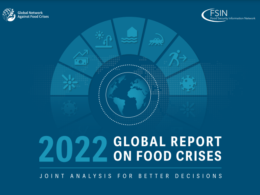The American Journal of Managed Care,
October 2020, Volume 26, Issue 10
Peter S. Antkowiak, MD, Michael N. Cocchi, MD, David T. Chiu, MD, MPH, Leon D. Sanchez, MD, MPH
Image credit: freepik
Key messages
- The coronavirus disease 2019 pandemic has created opportunities for hospitals and emergency departments to emerge leaner and more efficient than before.
- Key solutions must be applied to optimize operational efficiency, patient safety, and fiscal responsibility.
- Limiting artificial variability and understanding the contrast between it and natural variability are necessary for efficient use of hospital capacity.
The coronavirus disease 2019 (COVID-19) pandemic has forced hospital administrators to implement various operational changes that will redefine health care delivery for the foreseeable future. As operational leaders prepare for an eventual return to prepandemic patient volume, we must balance competing priorities: non-COVID-19 elective patient volume that positively affects the revenue cycle and maintaining optimal surge capacity for future peaks of COVID-19-related illness.
Prior to the current pandemic, emergency department (ED) boarding was an unfortunate reality across the United States that led to well-documented increases in mortality, length of stay, and overall cost for admitted patients. 1Overcrowding in the midst of a respiratory pandemic is a dangerous proposition that affects both patient and provider safety. Lessons learned from the pandemic must empower hospitals to emerge leaner than before.
Surge preparation for COVID-19 necessitated reallocation of resources by increasing intensive care unit (ICU) capacity and temporarily eliminating elective surgeries. 2In most institutions across the United States, and as seen in recently published data from our own institution, the pandemic caused unforeseen declines in demand for emergency services. 3As we debate strategies to reopen service lines, operational leaders must recognize that decreased patient volume was not the only reason for improved ED efficiency during the pandemic.
Institutional missions, often driven by fiscal priorities, have unintentional consequences on patient throughput. Harvey Fineberg, MD, PhD, chair of the White House’s newly established Standing Committee on Emerging Infectious Diseases and 21st Century Health Threats, previously coauthored a piece in The New England Journal of Medicine titled “Smoothing the Way to High Quality, Safety, and Economy”; it discussed the detrimental effects of misguided institutional priorities to perform as many planned surgeries as possible. 4Hospitals earn more for elective admissions than for patients admitted through the ED; for this reason, in many institutions, elective admissions take priority over emergency patients. 5,6Although hospital-scheduled admissions may increase revenue, when adjusted for patient volume, they are counterintuitively less predictable than admissions arriving through the ED. 7So, as administrators reprioritize revenue-generating elective surgeries, we must remain cognizant that preserving optimal patient flow is critical for safe and effective care of patients with COVID-19.
Achieving equilibrium between operational efficiency and revenue growth requires understanding differences between natural and artificial variability, a concept introduced by Eugene Litvak, PhD, in the early 2000s. The components of natural variability within an institution are largely random and include a patient’s clinical presentation and physician expertise levels. Natural variability cannot be eliminated; it must be optimally managed. Artificial variability, on the other hand, is influenced by the aforementioned institutional priorities including scheduled surgical admissions, nonemergent interventional radiology/cardiac cases, and incoming inpatient transfers. 8
Limiting artificial variability is integral to efficient use of hospital capacity. As local economies begin to reopen, patients emerge from quarantine, and elective surgical volume increases, we have already started to experience an uptick in boarding times at EDs across our state. This is not surprising, as surges in artificial variability have negative impacts on ED, operating room (OR), and ICU throughput. Work coauthored by Donald Berwick, MD, MPP, president emeritus at the Institute for Healthcare Improvement and a former administrator of CMS, has shown that high volumes of scheduled surgical cases increase ICU diversions. 9This upstream bottleneck increases the likelihood of ED throughput delays, leading to a ripple effect of consequences, including reduced quality of care and increased mortality. 10
Understanding this contrast between types of variability illustrates why the COVID-19 pandemic led to decreased ED boarding: (1) average overall hospital census decreased due to decreased patient volume, (2) system capacity increased due to field hospitals and dedicated inpatient units balanced with smooth discharges of non-pandemic-related cases, and (3) peaks in artificial variability decreased, thereby reducing the magnitude and frequency of bottlenecks. In reviewing quality data from our own ED, we observed a statistically significant decrease in boarding hours when comparing peak months during the COVID-19 pandemic with matched months in prior years. At Beth Israel Deaconess Medical Center, at peak surge, we increased our ICU capacity by 73% of our normal capacity, which also contributed to reduced boarding of ED patients bound for the ICU. From conversations with colleagues across the country, we expect this is a consistent pattern across most institutions.
Given the high likelihood of future COVID-19-related volume peaks, we must use this opportunity to prevent a return to prepandemic levels of overcrowding.
We propose several solutions to reducing artificial variability that optimize operational efficiency, patient safety, and fiscal responsibility:
- Tertiary centers should optimize transfer processes of patients by coordinating with in-network facilities to redirect appropriate transfers in order to minimize artificial peaks and smooth the daily number of transfers across the week. This centralized oversight “load balancing” will avoid overwhelming any single institution.
- Surgical leaders should build optimal elective surgery schedules that flatten OR usage peaks and leave open adequate OR time for natural variability of emergent cases.
- Hospital leaders must collaborate with local skilled nursing and rehabilitation facilities to smooth the volume of discharges across weekdays to ensure exit throughput and reduce capacity bottlenecks.
- Psychiatric patient boarding, consistently identified as a harmful throughput delay, must be addressed at the state level by increasing psychiatric inpatient capacity, optimizing transfer processes, and separating psychiatric care workflows.
- Hospital administrators must avoid the tendency to overcorrect budget shortfalls by increasing hospital occupancy rates, as this could lead to competition for beds between patients with COVID-19 and those without.
- Operations leaders must collaborate with radiology teams to optimize flow through various imaging studies and interventions, as this is an underrecognized cause of artificial variability.
As we look beyond the next few months of this pandemic, we should capitalize on relatively low bed occupancies to optimize our health systems.
Improving operational efficiency might be the only tool available to enable the much-needed balance between increasing revenue and protecting patient access to care. A situation in which medical professionals are forced to choose between caring for elective admissions and patients with COVID-19 is simply untenable. As clinicians and health care leaders, we are morally compelled to respond to a new reality.
Author Affiliations: Department of Emergency Medicine (PSA, MNC, DTC, LDS) and Department of Anesthesia, Critical Care and Pain Medicine (MNC), Beth Israel Deaconess Medical Center, Harvard Medical School, Boston, MA.
Source of Funding: None.
Author Disclosures: The authors report no relationship or financial interest with any entity that would pose a conflict of interest with the subject matter of this article.
Authorship Information: Concept and design (PSA, MNC, LDS); acquisition of data (PSA, DTC); analysis and interpretation of data (PSA, DTC, LDS); drafting of the manuscript (PSA, MNC); critical revision of the manuscript for important intellectual content (PSA, MNC, LDS); and administrative, technical, or logistic support (DTC, LDS).
Address Correspondence to: Peter S. Antkowiak, MD, Beth Israel Deaconess Medical Center, Emergency Medicine-W/CC 2, One Deaconess Rd, Boston, MA 02215. Email: pantkowi@bidmc.harvard.edu.
REFERENCES
1. Sun BC, Hsia RY, Weiss RE, et al. Effect of emergency department crowding on outcomes of admitted patients. Ann Emerg Med. 2013;61(6):605–611.e6. doi:10.1016/j.annemergmed.2012.10.026
2. Khullar D, Bond AM, Schpero WL. COVID-19 and the financial health of US hospitals. JAMA. 2020;323(21):2127–2128. doi:10.1001/jama.2020.6269
3. Kazi DS, Wadhera RK, Shen C, et al. Decline in emergent and urgent care during the COVID-19 pandemic. medRxiv. Preprint published online May 18, 2020. doi:10.1101/2020.05.14.20096602
4. Litvak E, Fineberg HV. Smoothing the way to high quality, safety, and economy. N Engl J Med. 2013;369(17):1581–1583. doi:10.1056/NEJMp1307699
5. McHugh M, Regenstein M, Siegel B. The profitability of Medicare admissions based on source of admission. Acad Emerg Med. 2008;15(10):900–907. doi:10.1111/j.1553–2712.2008.00238.x
6. Klasco R, Wolfe R. Sorry, ER patients. people with elective procedures get the hospital beds first. Washington Post. February 24, 2019. Accessed May 30, 2020. https://www.washingtonpost.com/national/health-science/sorry-er-patients-people-with-elective-procedures-get-the-hospital-beds-first/2019/02/22/643d1460-2a25-11e9-984d-9b8fba003e81_story.html
7. Litvak E, Long MC. Cost and quality under managed care: irreconcilable differences? Am J Manag Care. 2000;6(3):305–312.
8. Litvak E. Optimizing patient flow by managing its variability. In: Berman S, ed. Front Office to Front Line: Essential Issues for Health Care Leaders. Joint Commission Resources; 2005:91–111.
9. McManus ML, Long MC, Cooper A, et al. Variability in surgical caseload and access to intensive care services. Anesthesiology. 2003;98(6):1491–1496. doi:10.1097/00000542–200306000–00029
10. Singer AJ, Thode HC Jr, Viccellio P, Pines JM. The association between length of emergency department boarding and mortality. Acad Emerg Med. 2011;18(12):1324–1329. doi:10.1111/j.1553–2712.2011.01236.x
Originally published at https://www.ajmc.com on July 9, 2020.
PDF version
chrome-extension://efaidnbmnnnibpcajpcglclefindmkaj/viewer.html?pdfurl=https%3A%2F%2Fcdn.sanity.io%2Ffiles%2F0vv8moc6%2Fajmc%2F214d69bf6d86b8cabc298194f92dd8d6b98fd943.pdf%2FAJMC_10_2020_Antkowiak_final.pdf&clen=83667&chunk=true












